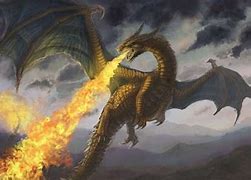
The Gardens: Andre Le Notre
The landscape design at the Palace of Versailles is one of the most extravagant in history. Headed by Andre Le Notre, the gardens at Versailles cover nearly 2,000 acres of land and were executed in the French formal garden style, or jardin a la francaise. This style is characterized by its meticulously manicured lawns, parterres of flowers, numerous fountains, and sculptures.
A common feature of sculpture and decoration at Versailles is the use of classical mythology as allegory . The Bassin de Latone was designed by Le Notre and sculpted by Gaspard and Balthazar Marsy between 1668–1670. This fountain depicts scenes from Ovid’s Metamorphoses, chosen as allegories to revolts during the king’s reign. The Bassin d’Apollon is another fountain that depicts the sun god driving his chariot to light the sky. The Grotte de Thetys is a freestanding structure with an interior decorated in elaborate shell-work to represent the myth of Apollo.
The Grande Canal is a notable feature of the gardens, with an impressive length of 1,500 x 62 meters. King Louis XIV ordered the construction of “little Venice ” on the Grand Canal, which housed yachts, gondolas, and gondoliers received from Venice. It also served a functional purpose by gathering the water that drained from the fountains and redistributing it to the gardens by horse-powered pump.
The Grande Commande is a series of 24 statues that were commissioned by Louis XIV to decorate the gardens. The statues illustrate the classic quaternities (sets of 4) at the time of the Four Humors, the Four Parts of the Day, the Four Parts of the World, The Four Forms of Poetry, the Four Elements, and the Four Seasons. Four additional sculptures depict abductions from classical mythology.
Vancouver138 W 8th Avenue,Vancouver, BC, V5Y 1N2
MontrealSuite 606,460 Ste-Catherine O,Montreal, QC, H3B 1A7
LinkedIn and 3rd parties use essential and non-essential cookies to provide, secure, analyze and improve our Services, and to show you relevant ads (including professional and job ads) on and off LinkedIn. Learn more in our Cookie Policy.
Select Accept to consent or Reject to decline non-essential cookies for this use. You can update your choices at any time in your settings.
Table of Contents Ask the Chatbot a Question
Baroque architecture, architectural style originating in late 16th-century Italy and lasting in some regions, notably Germany and colonial South America, until the 18th century. It had its origins in the Counter-Reformation, when the Catholic Church launched an overtly emotional and sensory appeal to the faithful through art and architecture. Complex architectural plan shapes, often based on the oval, and the dynamic opposition and interpenetration of spaces were favoured to heighten the feeling of motion and sensuality. Other characteristic qualities include grandeur, drama and contrast (especially in lighting), curvaceousness, and an often dizzying array of rich surface treatments, twisting elements, and gilded statuary. Architects unabashedly applied bright colours and illusory, vividly painted ceilings. Outstanding practitioners in Italy included Gian Lorenzo Bernini, Carlo Maderno, Francesco Borromini, and Guarino Guarini. Classical elements subdued Baroque architecture in France. In central Europe, the Baroque arrived late but flourished in the works of such architects as the Austrian Johann Bernhard Fischer von Erlach. Its impact in Britain can be seen in the works of Christopher Wren. The late Baroque style is often referred to as Rococo or, in Spain and Spanish America, as Churrigueresque.
16th–18th-century European architectural style
Baroque architecture is a highly decorative and theatrical style which appeared in Italy in the late 16th century and gradually spread across Europe. It was originally introduced by the Catholic Church, particularly by the Jesuits, as a means to combat the Reformation and the Protestant church with a new architecture that inspired surprise and awe.[1] It reached its peak in the High Baroque (1625–1675), when it was used in churches and palaces in Italy, Spain, Portugal, France, Bavaria and Austria. In the Late Baroque period (1675–1750), it reached as far as Russia, the Ottoman Empire and the Spanish and Portuguese colonies in Latin America. In about 1730, an even more elaborately decorative variant called Rococo appeared and flourished in Central Europe.[2][3]
Baroque architects took the basic elements of Renaissance architecture, including domes and colonnades, and made them higher, grander, more decorated, and more dramatic. The interior effects were often achieved with the use of quadratura (i.e. trompe-l'œil painting combined with sculpture): the eye is drawn upward, giving the illusion that one is looking into the heavens. Clusters of sculpted angels and painted figures crowd the ceiling. Light was also used for dramatic effect; it streamed down from cupolas, and was reflected from an abundance of gilding. Twisted columns were also often used, to give an illusion of upwards motion, and cartouches and other decorative elements occupied every available space. In Baroque palaces, grand stairways became a central element.[4]
The Early Baroque (1584–1625) was largely dominated by the work of Roman architects, notably the Church of the Gesù by Giacomo della Porta (consecrated 1584) façade and colonnade of St. Peter's Basilica by Carlo Maderno (completed 1612) and the lavish Barberini Palace interiors by Pietro da Cortona (1633–1639), and Santa Susanna (1603), by Carlo Maderno. In France, the Luxembourg Palace (1615–45) built by Salomon de Brosse for Marie de' Medici was an early example of the style.[5]
The High Baroque (1625–1675) produced major works in Rome by Pietro da Cortona, including the (Church of Santi Luca e Martina) (1635–50); by Francesco Borromini (San Carlo alle Quattro Fontane (1634–1646)); and by Gian Lorenzo Bernini (The colonnade of St. Peter's Square) (1656–57). In Venice, High Baroque works included Santa Maria della Salute by Baldassare Longhena. Examples in France included the Pavillon de l’Horloge of the Louvre Palace by Jacques Lemercier (1624–1645), the Chapel of the Sorbonne by Jacques Lemercier (1626–35) and the Château de Maisons by François Mansart (1630–1651).
The Late Baroque (1675–1750) saw the style spread to all parts of Europe, and to the colonies of Spain and Portugal in the New World. National styles became more varied and distinct. The Late Baroque in France, under Louis XIV, was more ordered and classical; examples included the Hall of Mirrors of the Palace of Versailles and the dome of Les Invalides. An especially ornate variant, appeared in the early 18th century; it was first called Rocaille in France; then Rococo in Spain and Central Europe. The sculpted and painted decoration covered every space on the walls and ceiling. Its most celebrated architect was Balthasar Neumann, noted for the Basilica of the Fourteen Holy Helpers and the Würzburg Residence (1749–51).[6]
How did the Rococo style differ from the Baroque?
How did the Rococo style differ from the Baroque?
The Rococo style originated in Paris about 1700 and was soon adopted throughout France and later in other countries, principally Germany and Austria. Like the Baroque style, Rococo was used in the decorative arts, interior design, painting, architecture, and sculpture. It is often characterized as the final phase of the Baroque, but the style differs from its predecessor in its intimate scale, asymmetry, lightness, elegance, and exuberant use of curving natural forms in ornamentation. Rococo painting in France, for example, began with the graceful, gently melancholic paintings of Antoine Watteau, culminated in the playful and sensuous nudes of François Boucher, and ended with the freely painted genre scenes of Jean-Honoré Fragonard. French Rococo painting in general was characterized by easygoing, lighthearted treatments of mythological and courtship themes, the introduction of the family as subject, rich and delicate brushwork, a relatively light tonal key, and sensuous colouring.
Learn more about the Rococo, the style that is often regarded as the final phase of the Baroque but which differs from its predecessor in a number of ways.
Baroque art and architecture, the visual arts and building design and construction produced during the era in the history of Western art that roughly coincides with the 17th century. The earliest manifestations, which occurred in Italy, date from the latter decades of the 16th century, while in some regions, notably Germany and colonial South America, certain culminating achievements of Baroque did not occur until the 18th century. The work that distinguishes the Baroque period is stylistically complex, even contradictory. In general, however, the desire to evoke emotional states by appealing to the senses, often in dramatic ways, underlies its manifestations. Some of the qualities most frequently associated with the Baroque are grandeur, sensuous richness, drama, vitality, movement, tension, emotional exuberance, and a tendency to blur distinctions between the various arts.
Three main tendencies of the era
Three broader cultural and intellectual tendencies had a profound impact on Baroque art as well as Baroque music. The first of these was the emergence of the Counter-Reformation and the expansion of its domain, both territorially and intellectually. By the last decades of the 16th century the refined, courtly style known as Mannerism had ceased to be an effective means of expression, and its inadequacy for religious art was being increasingly felt in artistic circles. To counter the inroads made by the Reformation, the Roman Catholic Church after the Council of Trent (1545–63) adopted a propagandistic stance in which art was to serve as a means of extending and stimulating the public’s faith in the church. To this end the church adopted a conscious artistic program whose art products would make an overtly emotional and sensory appeal to the faithful. The Baroque style that evolved from this program was paradoxically both sensuous and spiritual; while a naturalistic treatment rendered the religious image more accessible to the average churchgoer, dramatic and illusory effects were used to stimulate piety and devotion and convey an impression of the splendour of the divine. Baroque church ceilings thus dissolved in painted scenes that presented vivid views of the infinite to the observer and directed the senses toward heavenly concerns.
The second tendency was the consolidation of absolute monarchies, accompanied by a simultaneous crystallization of a prominent and powerful middle class, which now came to play a role in art patronage. Baroque palaces were built on an expanded and monumental scale in order to display the power and grandeur of the centralized state, a phenomenon best displayed in the royal palace and gardens at Versailles. Yet at the same time the development of a picture market for the middle class and its taste for realism may be seen in the works of the brothers Le Nain and Georges de La Tour in France and in the varied schools of 17th-century Dutch painting. (For a detailed discussion of this phenomenon, see Rembrandt van Rijn.)
The third tendency was a new interest in nature and a general broadening of human intellectual horizons, spurred by developments in science and by explorations of the globe. These simultaneously produced a new sense both of human insignificance (particularly abetted by the Copernican displacement of the Earth from the centre of the universe) and of the unsuspected complexity and infinitude of the natural world. The development of 17th-century landscape painting, in which humans are frequently portrayed as minute figures in a vast natural setting, is indicative of this changing awareness of the human condition.
Early Baroque architecture was largely contained to Rome, later spreading to more Italian cities before making its way across other European nations. Some of the earliest completed works in the Baroque period were the Church of Gesu, in 1584, and the facade of St. Peter’s Basilica, designed in 1612. As the style took hold, it wasn’t just churches that were crafted in the aesthetic, but secular buildings too. One of the most famous examples of this—commissioned by Louis XIV of France—is the Palace of Versailles.
“The Baroque style overlapped with Neoclassicism in the 18th century, which largely replaced [Baroque architecture] by the end of the century,” Foster says of the style’s end. “Its disappearance partly had to do with religious associations made with the Baroque style as well as identification of it with monarchy and absolutism.”
Late Baroque (1675–1750)
During the period of the Late Baroque (1675–1750), the style appeared across Europe, from England and France to Central Europe and Russia, from Spain and Portugal to Scandinavia, and in the colonies of Spain and Portugal in the New World and the Philippines. It often took different names, and the regional variations became more distinct. A particularly ornate variant appeared in the early 18th century, called Rocaille in France and Rococo in Spain and Central Europe. The sculpted and painted decoration covering every space on the walls and ceiling. The most prominent architects of this style included Balthasar Neumann, noted for the Basilica of the Fourteen Holy Helpers and the Wurzburg Residence (1749–51). These works were among the final expressions of the Rococo or the Late Baroque.[6]
By the early 18th century, Baroque buildings could be found in all parts of Italy, often with regional variations. Notable examples included the Basilica of Superga, overlooking Turin, by Filippo Juvarra (1717–1731), which was later used as model for the Panthéon in Paris. The Stupinigi Palace (1729–31) was a hunting lodge and one of the Residences of the Royal House of Savoy near Turin. It was also built Filippo Juvarra.[24]
The Late Baroque period in France saw the evolving decoration of the Palace of Versailles, including the Hall of Mirrors and the Chapel. Later in the period, during the reign of Louis XV, a new, more ornate variant, the Rocaille style, or French Rococo, appeared in Paris and flourished between about 1723 and 1759.[25] The most prominent example was the salon of the Princess in Hôtel de Soubise in Paris, designed by Germain Boffrand and Charles-Joseph Natoire (1735–40).
Christopher Wren was the leading figure of the late Baroque in England, with his reconstruction of St. Paul's Cathedral (1675–1711) inspired by the model of St. Peter's Basilica in Rome, his plan for Greenwich Hospital (begun 1695), and Hampton Court Palace (1690–96). Other British figures of the late Baroque included Inigo Jones for Wilton House (1632–1647 and two pupils of Wren, John Vanbrugh and Nicholas Hawksmoor, for Castle Howard (1699–1712) and Blenheim Palace (1705–1724).[28]
In the 17th century Late Baroque style buildings in Lithuania were built in an Italian Baroque style, however in the first half of the 18th century a distinctive Vilnian Baroque architectural style of the Late Baroque was formed in capital Vilnius (in which architecture was taught at Vilnius Jesuit Academy, Jesuits colleges, Dominican schools) and spread throughout Lithuania.[29][30][31][32] The most distinctive features of churches built in the Vilnian Baroque style are very tall and slender towers of the main façades with differently decorated compartments, undulation of cornices and walls, decorativeness in bright colors, and multi-colored marble and stucco altars in the interiors.[29][30][32] The Lithuanian nobility funded renovations and constructions of Late Baroque churches, monasteries (e.g. Pažaislis Monastery) and their personal palaces (e.g. Sapieha Palace, Slushko Palace, Minor Radvilos Palace).[33][34]
Notable architects who built buildings in a Late Baroque style in Lithuania are Johann Christoph Glaubitz, Thomas Zebrowski, Pietro Perti (cooperated with painters Michelangelo Palloni, Giovanni Maria Galli), Giambattista Frediani, Pietro Puttini, Carlo Puttini, Jan Zaor, G. Lenkiewicz, Abraham Würtzner, Jan Valentinus Tobias Dyderszteyn, P. I. Hofer, Paolo Fontana [it], etc.[30][32][34]
, reconstructed in the 18th century by
, Giambattista Frediani and completed in 1701
in Vilnius, reconstructed in a Late Baroque style in the 17th century
Interior of the Church of the Visitation in the
, designed by Pietro Puttini, Carlo Puttini and Giovanni Battista Frediani and completed in 1690
Many of the most extraordinary buildings of the Late Baroque were constructed in Austria, Germany, and Czechia. In Austria, the leading figure was Fischer von Erlach, who built the Karlskirche, the largest church of Vienna, to glorify the Habsburg emperors. These works sometimes borrowed elements from Versailles combined with elements of the Italian Baroque to create grandiose new effects, as in the Schwarzenberg Palace (1715). Johann Lukas von Hildebrandt used grand stairways and ellipses to achieve his effects at the upper and lower Belvedere Palace in Vienna (1714–1722). In The Abbey of Melk, Jakob Prandtauer used an abundance of polychrome marble and stucco, statuary and ceiling paintings to achieve harmonious and highly theatrical effects.[39]
Another important figure of German Baroque was Balthasar Neumann (1687–1753), whose works included the Würzburg Residence for the Prince-Bishops of Würzburg, with its famous staircase.[40]
In Bohemia, the leading Baroque architect was Christoph Dientzenhofer, whose building featured complex curves and counter-curves and elliptical forms, making Prague, like Vienna, a capital of the late Baroque.[41]
Political and economic crises in the 17th century largely delayed the arrival of the Baroque in Spain until the late period, though the Jesuits strongly promoted it. Its early characteristics were a lavish exterior contrasting with a relatively simple interior and multiple spaces. They carefully planned lighting in the interior to give an impression of mystery. Early 18th century,[42] Notable Spanish examples included the new west façade of Santiago de Compostela Cathedral, (1738–50), with its spectacular towers, by Fernando de Casas Novoa. In Seville, Leonardo de Figueroa was the creator of the Palacio de San Telmo, with a façade inspired by the Italian Baroque. The most ornate works of the Spanish Baroque were made by Jose Benito de Churriguera in Madrid and Salamanca. In his work, the buildings are nearly overwhelmed by the ornament of gilded wood, gigantic twisting columns, and sculpted vegetation. His two brothers, Joaquin and Alberto, also made important, if less ornamented, contributions to what became known simply as the Churrigueresque style.[42]
with: America and American Baroque is too big to be contained in a single section. Expand by country (or region, at least).. You can help by
The Baroque style was imported into Latin America in the 17th century by the Spanish and the Portuguese, particularly by the Jesuits for the construction of churches. The style was sometimes called Churrigueresque, after the family of Baroque architects in Salamanca. A particularly fine example is Zacatecas Cathedral in Zacatecas City, in north-central Mexico, with its lavishly sculpted façade and twin bell towers. Another important example is San Cristobal de las Casas in Mexico.[43] A notable example in Brazil is the São Bento Monastery in Rio de Janeiro. begun in 1617, with additional decoration after 1668. The Metropolitan Tabernacle the Mexico City Metropolitan Cathedral, to the right of the main cathedral, built by Lorenzo Rodríguez between 1749 and 1760, to house the archives and vestments of the archbishop, and to receive visitors.[44]
Portuguese colonial architecture was modeled after the architecture of Lisbon, different from the Spanish style. The most notable architect in Brazil was Aleijadinho, who was native of Brazil, half-Portuguese, and self-taught. His most famous work is the Church of Saint Francis of Assisi (Ouro Preto).[45]
in Mexico, built between 1729-1772, an example of the
, Mexico City, built between 1571-1813, by several architects
, Cuba, built between 1748-1777
, church built between 1617-1747 by Spaniard
. It is a World Heritage Site by UNESCO
Complete façade of the
, built between 1550-1680
, Peru, built between 1576-1668, by Jean-Baptiste Gilles and Diego Martínez de Oviedo.
Panorama of the façade of the
, built between 1657-1672 by the Portuguese
and the Liman Manuel Escobar, is a World Heritage City by UNESCO
Baroque architecture often used visual and theatrical effects, designed to surprise and awe the viewer:
Which artists are associated with the Baroque style?
Which artists are associated with the Baroque style?
Annibale Carracci and Caravaggio were the two Italian painters who helped usher in the Baroque and whose styles represent, respectively, the classicist and realist modes. The painter Artemisia Gentileschi was recognized in the 20th century for her technical skill and ambitious history paintings. Gian Lorenzo Bernini, whose accomplishments included the design of the colonnade fronting St. Peter’s Basilica in Rome, was the greatest of the Baroque sculptor-architects. The orderly paintings of Nicolas Poussin and the restrained architecture of Jules Hardouin-Mansart reveal that the Baroque impulse in France was more subdued and classicist. In Spain, the painter Diego Velázquez used a sombre but powerful naturalistic approach that bore only some relation to the mainstream of Baroque painting. The style, meanwhile, made limited inroads to northern Europe, notably in what is now Belgium. That Spanish-ruled largely Roman Catholic region’s greatest master was the painter Peter Paul Rubens, whose tempestuous diagonal compositions and full-blooded figures are the epitome of Baroque painting. Art in the Netherlands, however, is more complex. Conditioned by the realist tastes of its middle-class patrons, such towering masters as Rembrandt, Frans Hals, and Johannes Vermeer remained largely independent of the Baroque in important respects, but many art texts nonetheless equate them with the style. The Baroque did have a notable impact in England, however, particularly in the architecture of Sir Christopher Wren.
Find out more about Artemisia Gentileschi, the Baroque painter whose accomplishments came to be celebrated in the 20th century.
How did Baroque art and architecture come about?
How did Baroque art and architecture come about?
Three broad tendencies had an impact on Baroque art, the first of which was the Counter-Reformation. Contending with the spread of the Protestant Reformation, the Roman Catholic Church, after the Council of Trent (1545–63), adopted a propagandist program in which art was to serve as a means of stimulating the public’s faith in the church. The Baroque style that evolved was both sensuous and spiritual. Whereas a naturalistic treatment rendered the religious image more accessible to the average churchgoer, dramatic and illusory effects were used to stimulate devotion and convey the splendour of the divine. The second tendency was the consolidation of absolute monarchies—Baroque palaces were built on a monumental scale to display the power of the centralized state, a phenomenon best displayed at Versailles. The third tendency was a broadening of human intellectual horizons, spurred by developments in science and explorations of the globe. These produced a new sense of human insignificance (particularly abetted by the Copernican displacement of Earth from the centre of the universe) and of the infinitude of the natural world. Landscape paintings in which humans are portrayed as minute figures in a vast setting were indicative of this changing awareness of the human condition.
Read more about the Counter-Reformation, a propagandist program adopted by the Roman Catholic Church to meet the spread of the Protestant Reformation through the use of art and architecture.
Where does the term Baroque come from?
Where does the term Baroque come from?
The term Baroque probably derived from the Italian word barocco, which philosophers used during the Middle Ages to describe an obstacle in schematic logic. Subsequently, the word came to denote any contorted idea or involute process of thought. Another possible source is the Portuguese word barroco (Spanish barrueco), used to describe an imperfectly shaped pearl. In art criticism the word Baroque has come to describe anything irregular, bizarre, or otherwise departing from rules and proportions established during the Renaissance. Until the late 19th century the term always carried the implication of odd, exaggerated, and overdecorated. It was only with Heinrich Wölfflin’s pioneering study, Renaissance und Barock (1888), that the term was used as a stylistic designation rather than as a term of thinly veiled abuse and that a systematic formulation of the characteristics of Baroque style was achieved.
Read about historian Heinrich Wölfflin, who refashioned the word
from a thinly veiled term of abuse to the name of a distinctive style and period.
Early Baroque (1584–1625)
Rome (consecrated 1584)
Interior view of dome of the Church of the Gesù by
, the first Paris church with a façade in the new Baroque style (1616–20)
, India, completed in 1604 AD. It holds the body of St.
Baroque architecture first appeared in the late 16th and early 17th century in religious architecture in Rome as a means to counter the popular appeal of the Protestant Reformation. It was a reaction against the more severe and academic earlier style of earlier churches, it aimed to inspire the common people with the effects of surprise, emotion and awe. To achieve this, it used a combination of contrast, movement, trompe-l'œil and other dramatic and theatrical effects, such as quadratura—the use of painted ceilings that gave the illusion that one was looking up directly at the sky. The new style was particularly favored by the new religious orders, including the Theatines and the Jesuits, who built new churches designed to attract and inspire a wide popular audience.[7]
One of the first Baroque architects, Carlo Maderno, used Baroque effects of space and perspective in the new façade and colonnade of Saint Peter's Basilica, which was designed to contrast with and complement the gigantic dome built earlier by Michelangelo.[8] Other influential early examples in Rome included the Church of the Gesù by Giacomo della Porta (consecrated 1584), with the first Baroque façade and a highly ornate interior, and Santa Susanna (1603), by Carlo Maderno.[9]
The Jesuits soon imported the style to Paris. The Church of St-Gervais-et-St-Protais in Paris (1615–1621) had the first Baroque façade in France, featuring, like the Italian Baroque façades, the three superimposed classical orders.[10] The Italian style of palaces was also imported to Paris by Marie de' Medici for her new residence, the Luxembourg Palace (1615–1624) by architect Salomon de Brosse, and for a new wing of the Château of Blois by François Mansard (1635–38). Nicolas Fouquet, the superintendent of finances for the young King Louis XIV, chose the new style for his château at Vaux-le-Vicomte (1612–1670) by Louis Le Vau. He was later imprisoned by the King because of the extravagant cost of the palace.[11]
In the Southern Netherlands, the Baroque architecture was introduced by the Catholic Church in the context of the Counter-Reformation and the Eighty Years' War. After the separation of the Netherlands Baroque churches were set up across the country. One of the first architects was Wenceslas Cobergher (1560-1634), who built the Basilica of Our Lady of Scherpenheuvel from 1609 until 1627 and the Church of Saint Augustine, Antwerp. Other churches are for example the St. Charles Borromeo Church, Antwerp (1615-1621) and the St. Walburga Church (Bruges) (1619-1641), both built by Pieter Huyssens. Later, secular buildings, such as the Guildhalls on the Grand-Place in Brussels and several Belfries, were constructed too.[citation needed]
The first example of early Baroque in Central Europe was the Corpus Christi Church, Nesvizh in the Polish–Lithuanian Commonwealth, built by the Jesuits on the Roman model between 1586 and 1593 in Nieśwież (after 1945 Niasvizh in Belarus).[12][13] The church also holds a distinction of being the first domed basilica with a Baroque façade in the Commonwealth and Eastern Europe.[13] Another early example in Poland is the Church of Saints Peter and Paul Church, Kraków, built between 1597 and 1619 by the Italian Jesuit architect Giovanni Maria Bernardoni.[14]























